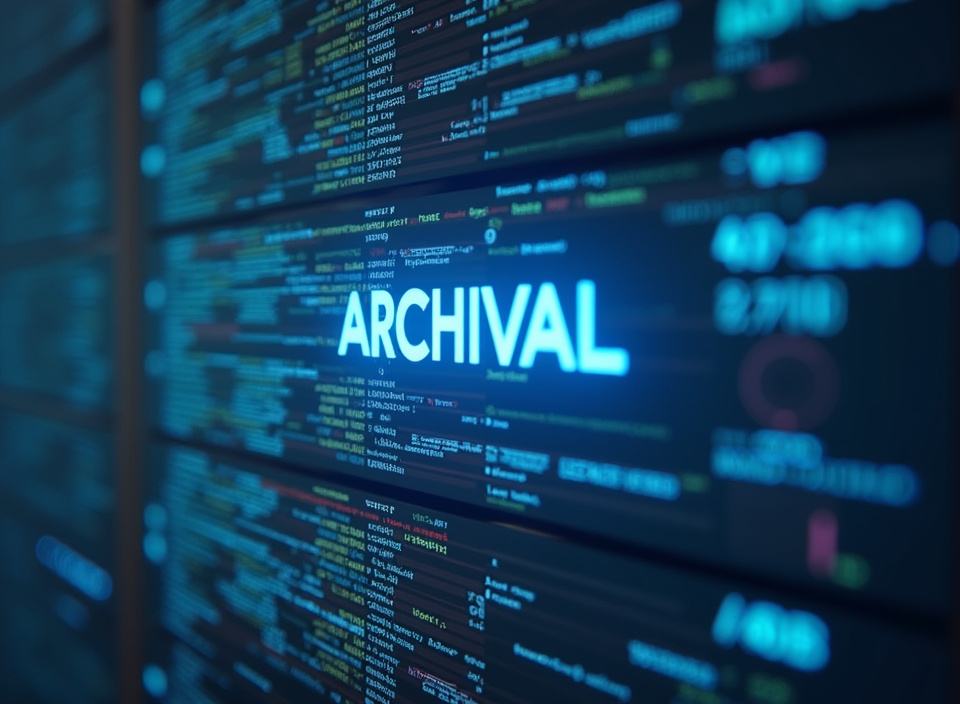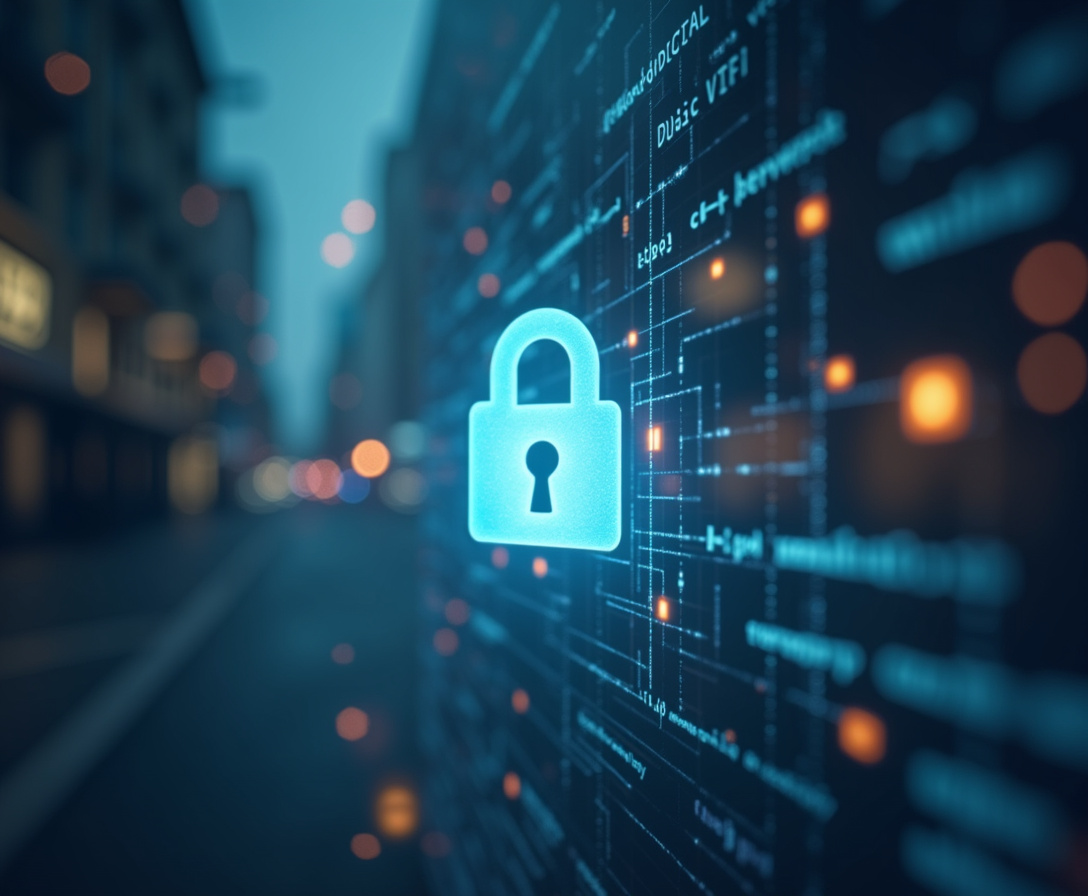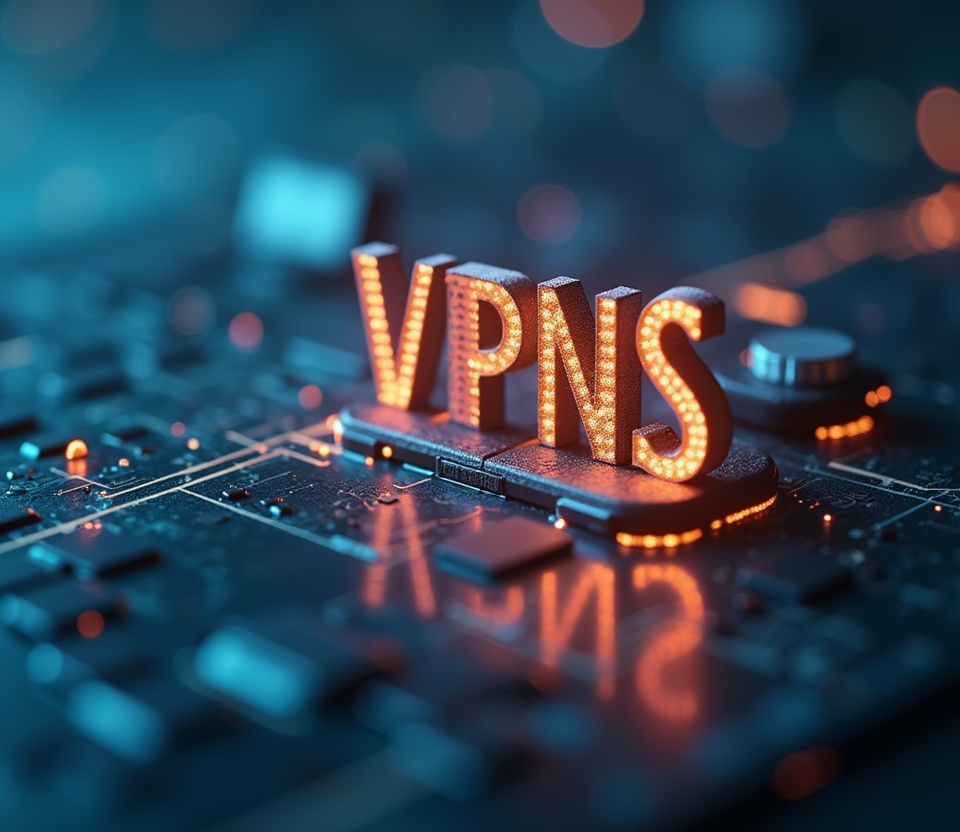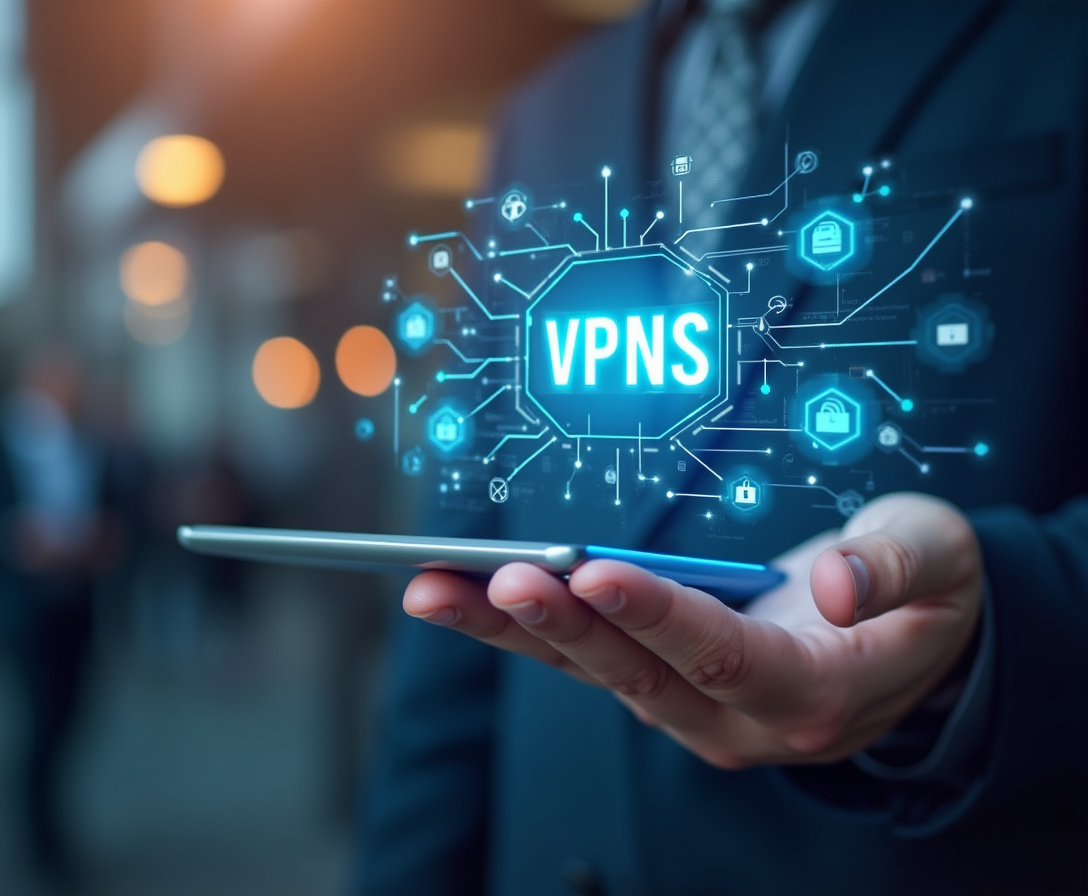VPNs for Historical Archives: Securing Document Integrity

Table of Contents
The Imperative of Digital Security in Historical Archives
The digital revolution has fundamentally reshaped the landscape of historical archives, presenting both unprecedented opportunities and significant challenges. While digitization enhances accessibility, preservation, and searchability, it also introduces vulnerabilities that threaten the core principles of archival integrity and 'historical data protection'. In an era where cyber threats are increasingly sophisticated, safeguarding sensitive information and ensuring the authenticity of historical records has become a critical imperative.
This article delves into the crucial role of Virtual Private Networks (VPNs) in securing digital archives, exploring how these tools can effectively mitigate risks, maintain 'document integrity', and provide secure access to invaluable historical resources. Specifically, we will examine the unique considerations for implementing an 'archive VPN', focusing on its contribution to preserving the accuracy and confidentiality of historical data. The challenge of securing digital archives stems from the inherent nature of network communication.
When historical documents, often containing 'sensitive information' like personal identifiers, confidential government communications, or proprietary business records, are transmitted or accessed online, they become potential targets for interception, alteration, or unauthorized disclosure. A single breach can have far-reaching consequences, compromising the integrity of the historical record, violating privacy, and jeopardizing the trust placed in archival institutions. Moreover, the increasing trend of remote access, while enhancing collaboration and research opportunities, widens the attack surface and introduces further security risks.
Researchers, archivists, and other stakeholders accessing archives from various locations and devices create additional entry points for potential threats. A robust security framework is therefore essential to protect digital archives from these diverse and evolving risks. Central to this framework is the concept of 'document integrity', which ensures that the information stored within the archive remains accurate, complete, and unaltered.
This requires protecting against unauthorized modification, deletion, or fabrication of records. Traditional methods of physical security, such as controlled access to archival facilities and physical authentication of documents, are insufficient in the digital realm. A comprehensive approach needs to be adopted, incorporating technological solutions that provide data encryption, access control, and auditability.
One of the most effective solutions for securing digital archives is the implementation of an 'archive VPN'. A VPN creates a secure, encrypted tunnel between a user's device and the archival network, effectively shielding data from eavesdropping and tampering. This tunnel encrypts all data transmitted between the user and the archive, rendering it unreadable to unauthorized parties who may intercept the communication.
This is particularly crucial for protecting 'sensitive information' during remote access or data transfer between archival institutions. Beyond encryption, a VPN also provides strong authentication, verifying the identity of users and devices before granting access to the network. This prevents unauthorized individuals from gaining access to sensitive information, even if they have obtained login credentials.
Multi-factor authentication can be integrated into the VPN solution to provide an additional layer of security, requiring users to provide multiple forms of identification, such as a password and a code from a mobile device. The benefits of using a 'VPN for archives' extend beyond simple security. A well-implemented VPN can also enhance data management and improve regulatory compliance.
By providing a secure and controlled environment for accessing and managing digital archives, a VPN helps organizations meet their legal and ethical obligations for protecting sensitive information.
Understanding VPNs: A Shield for Historical Data Transmission
The implementation of a 'VPN for archives' is not a one-size-fits-all solution. Archives must carefully consider their specific security needs and select a VPN solution that aligns with their unique requirements. This involves assessing the types of data being archived, the level of sensitivity of the information, the number of users requiring access, and the technical capabilities of the archival institution.
One of the key considerations is the choice of encryption protocols. Modern VPNs typically utilize strong encryption algorithms such as AES (Advanced Encryption Standard) or ChaCha20. AES is a widely adopted standard that provides robust security against unauthorized access.
It employs a symmetric-key algorithm, meaning the same key is used for both encryption and decryption. AES is available in different key sizes (128-bit, 192-bit, and 256-bit), with larger key sizes providing stronger security. ChaCha20 is an alternative encryption algorithm that is often preferred for its performance on mobile devices and embedded systems.
It is a stream cipher, which means it encrypts data one byte at a time, making it more efficient for certain applications. The selection of an encryption protocol should be based on a thorough evaluation of the security strengths and performance characteristics of each algorithm, taking into account the specific hardware and software infrastructure of the archival institution. Another important factor is the choice of VPN protocol.
Common VPN protocols include OpenVPN, IPSec (Internet Protocol Security), and WireGuard. OpenVPN is a versatile and widely supported open-source protocol that offers strong security and flexibility. It can be configured to use a variety of encryption algorithms and authentication methods, making it highly adaptable to different security requirements.
IPSec is a mature protocol that is often used in enterprise environments for its robust security features and interoperability. It provides end-to-end security for network traffic, including encryption, authentication, and data integrity. IPSec is often used in conjunction with other security protocols, such as IKE (Internet Key Exchange), to establish secure connections.
WireGuard is a newer protocol that is gaining popularity for its speed and efficiency. It utilizes modern cryptography and a streamlined design to provide high performance and strong security. WireGuard is particularly well-suited for mobile devices and embedded systems, where performance is critical.
The selection of a VPN protocol should be based on a careful consideration of the security features, performance characteristics, and compatibility with the archival institution's existing infrastructure. In addition to encryption and VPN protocols, archives should also consider implementing strong authentication measures. Passwords alone are often insufficient to protect against unauthorized access.
Multi-factor authentication (MFA) adds an extra layer of security by requiring users to provide multiple forms of identification, such as a password and a code from a mobile device. MFA significantly reduces the risk of unauthorized access, even if a password is compromised. Furthermore, access control lists (ACLs) should be implemented to restrict access to 'sensitive information' based on user roles and permissions.
ACLs ensure that only authorized users have access to specific documents or data, further protecting 'sensitive information' from unauthorized disclosure. These lists can be configured to grant different levels of access to different users, ensuring that individuals only have access to the information they need to perform their duties. The implementation of an 'archive VPN' also requires careful planning and configuration.
Archives should develop a comprehensive security policy that outlines the procedures for managing and using the VPN. This policy should address issues such as password management, access control, and incident response. The VPN should be properly configured to ensure that all traffic is encrypted and that unauthorized access is prevented.
Regular security audits should be conducted to identify and address any vulnerabilities. Regular software updates and patching are also essential for maintaining the security of the VPN and protecting against known vulnerabilities. In essence, choosing the correct VPN solution and configuring it properly for archives is a balance between strong security and useability for archivists and researchers alike.
Implementing VPNs: Practical Strategies for Archival Security
The effectiveness of a 'VPN for archives' hinges not only on its technical capabilities but also on the organizational culture and practices surrounding its implementation. A VPN is merely a tool; its true value lies in how it is integrated into a holistic security framework that encompasses policies, training, and ongoing monitoring. Establishing clear security policies is paramount.
These policies should define acceptable use of the VPN, procedures for accessing 'sensitive information', and protocols for reporting security incidents. The policies should clearly articulate the responsibilities of all users in maintaining the security of the archival system, emphasizing the importance of protecting 'historical data protection'. This includes guidelines on creating strong passwords, avoiding phishing scams, and securing devices used to access the archive.
The policies should also address the consequences of violating security protocols, creating a culture of accountability and deterring risky behavior. Regular training programs are essential to educate users about the importance of security and how to use the 'archive VPN' effectively. Training should cover topics such as password management, phishing awareness, and secure remote access practices.
Users should understand the risks associated with accessing sensitive information from unsecured networks and the importance of always connecting through the VPN when accessing the archive remotely. Training should also emphasize the importance of reporting any suspected security incidents, such as phishing emails or unauthorized access attempts. Simulating real-world attack scenarios can be a powerful way to reinforce training and assess user preparedness.
Such simulated scenarios may test identifying phishing e-mails. Such training should be interactive and engaging, using real-world examples and practical exercises to reinforce key concepts. In addition to security policies and training programs, ongoing monitoring is essential to detect and respond to security incidents.
Security information and event management (SIEM) systems can be used to collect and analyze security logs from various sources, including the 'archive VPN', firewalls, and intrusion detection systems. SIEM systems can help identify suspicious activity and alert security personnel to potential threats. Incident response plans should be developed to outline the steps to be taken in the event of a security breach.
These plans should include procedures for containing the breach, investigating the incident, and restoring systems to normal operation. Regular penetration testing can be used to identify vulnerabilities in the archival system and assess the effectiveness of security controls. Penetration testing involves simulating real-world attacks to identify weaknesses that could be exploited by malicious actors.
The results of penetration testing can be used to improve security policies, training programs, and technical controls. The human element is often the weakest link in any security system. Even the most sophisticated technical controls can be circumvented by careless or malicious users.
Therefore, it is essential to cultivate a security-conscious culture within the archival institution. This involves promoting awareness of security risks, encouraging users to report suspicious activity, and providing ongoing training and support. For example, archivists should report possible data breaches to the relevant compliance staff.
By fostering a culture of security, archives can significantly reduce the risk of data breaches and protect 'sensitive information'. Furthermore, the selection and management of vendors is also crucial for securing digital archives. Archives often rely on third-party vendors for services such as hosting, data storage, and software development.
It is essential to carefully vet these vendors to ensure that they have adequate security controls in place. Contracts with vendors should include clauses that require them to protect sensitive information and comply with relevant security regulations. Vendor security assessments should be conducted regularly to ensure that vendors continue to meet security requirements.
By carefully managing vendor relationships, archives can minimize the risk of data breaches and protect 'document integrity'.
Future-Proofing Archives: Evolving VPN Technologies and Best Practices
Beyond the core security functionalities, a well-designed 'archive VPN' can offer additional benefits that enhance the efficiency and effectiveness of archival operations. One such benefit is improved network performance. By optimizing network traffic and reducing latency, a VPN can enhance the speed and responsiveness of archival applications, particularly for remote users.
This can be achieved through techniques such as data compression, traffic shaping, and quality of service (QoS) prioritization. Data compression reduces the amount of data that needs to be transmitted over the network, improving bandwidth utilization and reducing latency. Traffic shaping prioritizes certain types of traffic over others, ensuring that critical archival applications receive the bandwidth they need to operate efficiently.
QoS prioritization allows administrators to allocate network resources based on the importance of different applications and users. Another benefit is enhanced collaboration. A secure and reliable 'VPN for archives' facilitates secure collaboration among archivists, researchers, and other stakeholders, regardless of their location.
This can enable remote teams to work together seamlessly on projects, share data securely, and access archival resources from anywhere in the world. Collaboration tools, such as shared document repositories and video conferencing systems, can be integrated with the VPN to provide a comprehensive collaboration platform. Furthermore, a VPN can enable secure access to archival resources for researchers and the public.
By providing a secure and authenticated access point, archives can make their collections more accessible to a wider audience while protecting sensitive information. Access controls can be implemented to restrict access to certain resources based on user roles and permissions, ensuring that only authorized individuals have access to 'sensitive information'. The VPN can also be configured to provide different levels of access to different resources, allowing archives to tailor access to the specific needs of different users.
Another important consideration is scalability. As archives grow and their digital collections expand, the 'archive VPN' must be able to scale to accommodate increasing demand. This requires choosing a VPN solution that can support a large number of concurrent users and a high volume of network traffic.
Cloud-based VPN solutions offer a scalable and flexible option, allowing archives to easily add or remove resources as needed. Monitoring and reporting are also essential for managing and optimizing the performance of the 'archive VPN'. Real-time monitoring tools can provide visibility into network traffic, user activity, and security events.
This information can be used to identify and resolve performance bottlenecks, detect security threats, and track user activity. Reporting tools can be used to generate reports on key performance indicators (KPIs), such as network utilization, user adoption, and security incidents. These reports can be used to assess the effectiveness of the VPN and improve its performance over time.
Integration with existing systems is also an important consideration. The 'archive VPN' should be able to seamlessly integrate with existing archival systems, such as content management systems (CMSs), digital asset management (DAM) systems, and access control systems. This integration can streamline workflows, improve data management, and enhance security.
APIs (application programming interfaces) can be used to integrate the VPN with other systems, allowing them to communicate and exchange data seamlessly. Finally, cost is an important factor to consider when selecting an 'archive VPN' solution. The total cost of ownership (TCO) should be evaluated, taking into account the initial investment, ongoing maintenance costs, and operational expenses.
Open-source VPN solutions offer a cost-effective alternative to commercial solutions, but may require more technical expertise to implement and maintain. Cloud-based VPN solutions offer a pay-as-you-go model, which can be more cost-effective for archives with fluctuating demand.
In conclusion, the implementation of a robust and well-managed 'archive VPN' is no longer a luxury but a necessity for modern historical archives. As digitization efforts accelerate and the threat landscape becomes increasingly complex, protecting 'document integrity' and ensuring 'historical data protection' are paramount. A properly configured VPN provides a critical layer of security, encrypting 'sensitive information' in transit, authenticating users, and controlling access to valuable historical resources.
However, simply deploying a VPN is not enough. Success depends on a holistic approach that combines the right technology with sound security policies, comprehensive training programs, and ongoing monitoring. Archives must carefully assess their specific needs and select a 'VPN for archives' solution that aligns with their unique requirements.
This includes considering factors such as encryption protocols, VPN protocols, authentication methods, and scalability. The VPN must be properly configured to ensure that all traffic is encrypted and that unauthorized access is prevented. Regular security audits and penetration testing should be conducted to identify and address any vulnerabilities.
A comprehensive security policy should be developed to outline the procedures for managing and using the VPN, and all users should be trained on these procedures. Ongoing monitoring is essential to detect and respond to security incidents in a timely manner. Furthermore, archives must recognize that security is an ongoing process, not a one-time event.
The threat landscape is constantly evolving, and archives must continuously adapt their security measures to stay ahead of emerging threats. This requires staying informed about the latest security vulnerabilities and best practices, and regularly updating security policies and procedures. Collaboration with other archival institutions and security experts is also essential for sharing knowledge and best practices.
By working together, archives can collectively improve their security posture and protect our shared historical heritage. In addition to its security benefits, a well-designed 'archive VPN' can also enhance the efficiency and effectiveness of archival operations. By improving network performance, facilitating secure collaboration, and enabling secure access to archival resources, a VPN can empower archivists, researchers, and the public to engage with history in new and meaningful ways.
The long-term preservation of historical records is a responsibility that we all share. By investing in robust security measures such as 'archive VPN' solutions, we can ensure that these invaluable resources remain accessible and protected for future generations. It is also useful to consider the potential impacts of future Internet technologies such as quantum computing.
While quantum computers are not yet a practical threat to currently used encryption algorithms, it is likely that they will become so in the future. It would be prudent to research and deploy quantum-resistant VPN solutions as they become available. Therefore, archives must continue to consider and plan the mitigation of these issues.
This article is just the beginning of a long process in improving the security of digital archives. By investing in the right technologies, policies, and training programs, archives can protect "document integrity", ensure "historical data protection" and safeguard "sensitive information" and preserve our collective memory for future generations.
Stay Updated
Get the latest VPN news, tips, and exclusive deals to your inbox.




